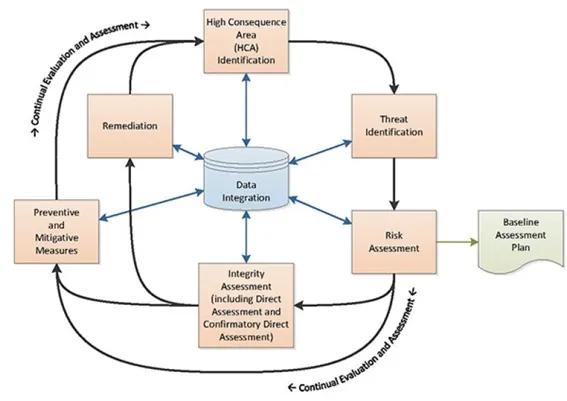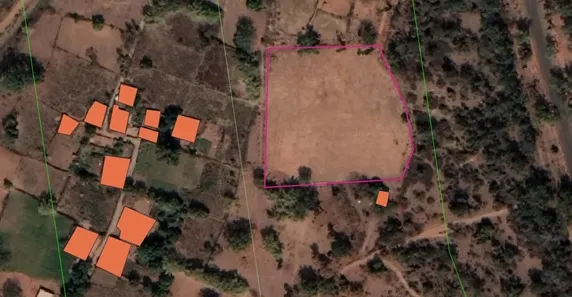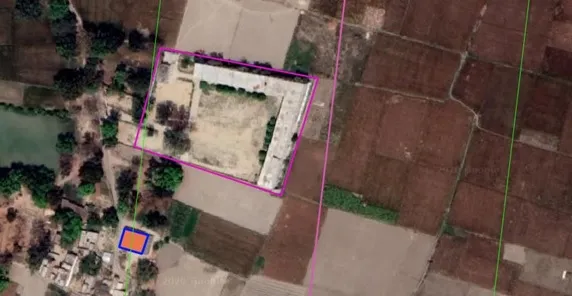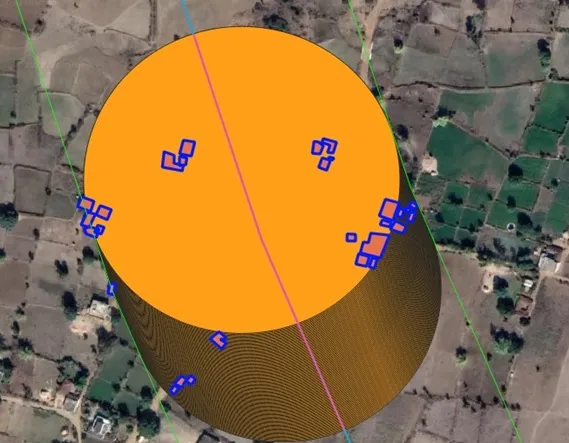High Consequence Area identification for Hydrocarbon Pipelines
Pipeline networks facilitate transportation of hazardous materials over long distances and are considered a relatively safe mode of transportation. However, a significant number of incidents, accidents and pipeline failures continue to occur periodically. Several studies have attempted to find causal relationship amongst factors leading to pipeline failure, however such relationships are found to be only associative and cannot provide a holistic approach to pipeline failure causation [2]. Other studies suggest that while prevailing integrity management requirements have kept the rate of corrosion failures and material failures of pipes or welds – low, the overall occurrence of transmission pipeline incidents in high consequence areas (HCA) have not declined [1], indicating that these pipeline failures continue to result in high negative consequences to the natural and built environments. We find that there is an essential requirement for managing the risk of pipeline failures by managing for its possible consequences.
High Consequence Areas (HCA)
Hydrocarbon pipeline leaks can adversely impact human health and the environment. However, the magnitude of this impact differs from area to area. There are specific areas in which the impact of a leak will be more significant than it would be in others due to concentrations of people who could be affected or due to the presence of environmental resources that are unusually sensitive to damage. Because of the potential for dire consequences of pipeline failures in certain areas, these areas merit a higher level of protection and can be defined as High Consequence Areas (HCA).

Risk is the mathematical product of the likelihood and the consequences of negative events. Therefore risk may be decreased by reducing either the likelihood or the consequences of a failure, or both [3]. This analyses seeks to specifically address the consequence portion of the risk equation, by accurately and comprehensively identifying and classifying High Consequence Areas (HCA). Greater priority and attention is then given to these areas by Pipeline Operators to not only minimize occurrence of pipeline failures but also reduce possible consequences. We will see that this can be done very effectively by identifying High Consequence Areas, which also often serves as an important first step in Pipeline Integrity Management (PIM) programs.
Methodlogy Used
Since liquid and gas hydrocarbon pipeline leaks can have very different impacts on humans and the environment, the methodology used for identifying HCA for each of these types of pipelines are also different. For the sake of simplicity, this article will describe the methodology and results for identifying HCAs for a 303 km natural gas transmission pipeline, similar methodologies are also available for liquid hydrocarbon pipelines. This study uses guidelines based on American Society of Mechanical Engineers (ASME) standards to measure the potential impact area around the pipeline.

The methodology used here also follows the ASME standard’s guidance for counting the number of houses and individual units in buildings within the potential impact area and for measuring the potential impact area. The housing unit count is used to help determine the relative consequences of a rupture of the pipeline segment. The ranking of these areas is an important element of mapping consequence and hence risk assessment along pipeline sections. Following are some of the considerations while evaluating the consequences of a pipeline failure, also adopted from the standard:
- Population density
- Proximity of the population to the pipeline (including consideration of manmade or natural barriers that may provide some level of protection)
- Proximity of populations with limited or impaired mobility (e.g., hospitals, schools, child-care centers, retirement communities, prisons, recreation areas), particularly in unprotected outside areas
- Property damage
- Environmental damage
- Effect of unignited gas releases
- Security of gas supply (e.g., impacts resulting from interruption of service)
- Public convenience and necessity
- Potential for secondary failures
We also take guidance from Pipeline and Hazardous Materials Safety Administration (PHMSA), US Department of Transportation Regulation that provides detailed specifications and definitions. Based on this regulation an HCA for a natural gas pipeline is determined as the area within a potential impact circle containing (a) an “identified site” or (b) 20 or more buildings intended for human occupancy. Where an identified site is a place where people commonly gather, such as hospitals, schools, community centers, commercial establishments etc.

Use of Satellite Technology
A geographic understanding of the gas transmission pipeline location and its surroundings is fundamental to this first step of the Pipeline Integrity Management (PIM) process. In addition to physical verification, Geographic Information Systems (GIS) and its related technologies, such as Remote Sensing (use of aerial photography and satellite imageries) can be used to accurately to evaluate pipeline surroundings and locations [1]. This analyses makes extensive use of GIS and satellite remote sensing to identify and classify HCAs. Using these technologies and a data driven approach, pipeline operators can get a precise understanding of what is around their pipelines, such as a count of residential units, community centers, commercial establishments etc.
Results
High resolution satellite imagery and crowd sourced data from base maps are used to identify and geo-reference buildings, commercial establishments and community spaces within the pipeline’s potential impact circle (PIC). Several examples of these analyses can be seen below. In this way a complete, accurate and precise database of buildings and units meant for human occupancy and ‘identified sites’ (consisting of places of worship, schools, healthcare facilities, commercial establishments, restaurants etc.) within the pipeline PIC are compiled and loaded onto a GIS.


Images: Residential Buildings within pipeline PIC (left). Identified sites within pipeline PIC (right).
Several geospatial analytic processes are run to identify high consequence areas based on the criteria described above. The analyses includes counting the number of housing units and identified locations within the PIC, at every meter (m) along the pipeline centerline. If the number of structures for human occupancy exceeds 20 and/or an identified site was found within the PIC, the corresponding area was determined to be a high consequence area. Examples of this analysis can be seen below, wherein several circles are seen drawn along the pipeline section. In this example, we see only circles in the area that have 20 or more structures for human occupancy, the footprints of these circles effectively indicate a HCA.

Conclusion
Through this analyses, we touch upon the importance of HCA identification as an important risk mitigation tool for pipeline operators. We are also able to fulfill the regulatory requirements of HCA identification in a data-driven and cost effective manner. HCA identification is a regulatory requirement in many countries, such as the United States, Canada and India. Effective HCA classification can serve as the backbone for executing a successful Pipeline Integrity Management (PIM) program and can be an important first step in this direction. In summary the HCA identification process described here allows for a precise, data driven and cost effective method to fulfill regulatory and compliance requirements, while also decreasing the risk of pipeline failures.
References:
[1] National Transportation Safety Board. 2015. Integrity Management of Gas Transmission Pipelines in High Consequence Areas. Safety Study NTSB/SS-15/01. Washington, DC.
[2] Towards a Causal Model from Pipeline Incident Data Analysis: S. Zohra Halim, Mengxi Yu, Harold Escobar, Noor Quddus
[3] American Society of Mechanical Engineers (ASME) B31.8S-2004, Managing System Integrity of Gas Pipelines

